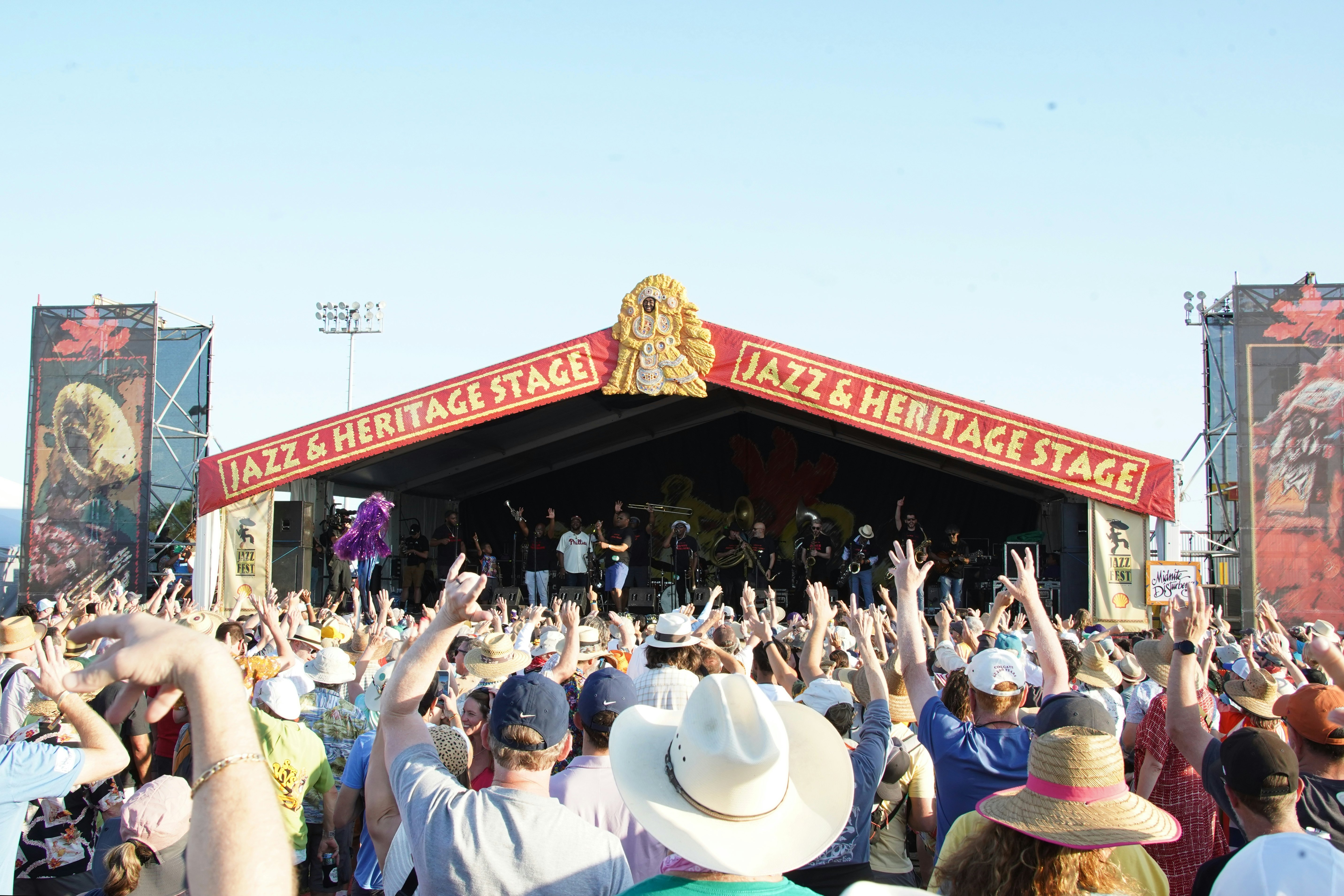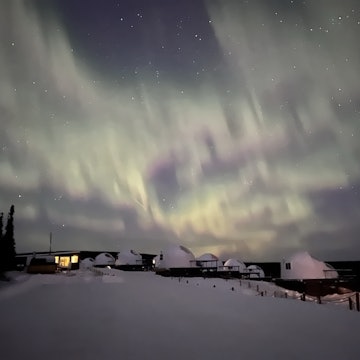
A local writer answers frequently asked questions about New Orleans

Aug 21, 2024 • 8 min read

Food, drinks, fun all year: New Orleans is the total package. Let's answer some frequently asked questions. Shutterstock
I've been writing for Lonely Planet since 2007(!) and in my tenure have contributed to over 100 guidebooks spanning three continents. But while on assignment in 2009, while in New Orleans researching the guidebook for the first time, I fell in love with the city at a point in my life when I was searching for a home. In relatively short order I moved here and began a family; my daughter, New Orleans born and raised, just turned 10.
Should I come for Mardi Gras?
Yes. Probably.
OK, I love Mardi Gras. It is the most wonderful time of the year. Many tourists want to avoid it because they think Mardi Gras is all public alcohol consumption and breast flashing, and it is not. That sort of raging id behavior is largely confined to the French Quarter; flash someone on the St Charles Ave parade route and there’s a very good chance you’ll get yelled at by some angry parents.
That’s because Mardi Gras is, by and large, a family holiday. The history of carnival is long and there are countless variations on how to celebrate Mardi Gras, but for most New Orleanians, the holiday is about watching large parades snake down St Charles Avenue, listening to high school marching bands, and catching "throws" from big floats. All of the above activities are done with kids in mind and tow.
Carnival season is about 2.5 weeks long, packed with parades and gatherings, including Chewbacchus, a conglomeration of DIY costuming, homemade float crafting and nerd culture love with approximately zero “show your ***s” vibe.
On actual Mardi Gras day, you may run into the St Anne’s parade, a riot of homegrown costuming that's a consistent feast for the senses. These individual expressions of art and creativity are, for us, what truly makes Mardi Gras day special. With all of that said, public drunkenness is real, as are crowds. It is legitimately tough to avoid people on Mardi Gras day, so if you’re deeply introverted, you may wanna skip Fat Tuesday.

Should I come for Jazz Fest?
The New Orleans Jazz & Heritage Festival is the biggest music event in the New Orleans calendar, which either makes it something you can’t miss, or something you’d do well to avoid.
Jazz Fest attracts a A-list dinosaur acts (Springsteen, the Rolling Stones, etc) and a ton of New Orleans artists. It also attracts crowds. If big music festivals are your thing, go for it. If they aren't, but you still love local New Orleans music, here’s a secret: you can see great NOLA music anytime of year. Sure, the weather is great during Jazz Fest (the last weekend of April and first weekend of May), and the talent is sort of concentrated, but a little research on the WWOZ Livewire, or heck, just a stroll up Frenchmen St during the evening, is also a good way of finding great local music during any given month.
Where should I eat?
If you want a more refined, white tablecloth dining experience, head to the French Quarter, the Central Business District (CBD)/Warehouse District, Uptown, and the Garden District. This isn’t a hard and fast rule; you can find fancy restaurants in other neighborhoods. But they are concentrated in the above areas. It can feel like property turnover moves slower in the French Quarter, so at times, it feels like the newer, more cutting edge (but also less renowned restaurants) in the local scene are more oriented towards the CBD.
If you want cheaper, more plate lunch-oriented dining, or classics like po’boys and crawfish, head anywhere outside of the Quarter and CBD. The city’s residential neighborhoods all have their own local restaurants, which really run the gamut from budget-friendly to midrange to high end, if eclectic – the ever oddball Jacque-Imo’s, with it’s ribeye steaks and alligator cheesecake, is a nice example of the last category.
Where should I stay?
If you’re into the latest bells and whistles and amenities, the Central Business District has the flashiest luxury hotels, while the French Quarter also offers luxury, but laced with historical aesthetics. If you want to be in more residential neighborhoods, you could opt for either the Garden or Lower Garden District, or on the other side of town in the Marigny or Bywater. In any of these neighborhoods, the lodging tends to have an upscale bohemian vibe, more millenial/Gen Z oriented in the Marigny/Bywater, and aged a scooch more in the Garden District and LGD.
New Orleans is trying, with mixed success to crack down on illegal short term rentals. Many of these are owned by out of town operators and/or investors who rent entire homes, which is contributing to a local housing crunch (we realize this issue is not unique to New Orleans. It just definitely exists here). If you go the short term rental route, ask if they have an approved STR license. And beware of listings that say they are ‘just’ a mile from the French Quarter. A mile from the Quarter can be pretty far, especially at night.
Is it safe?
Violent crime is down in New Orleans. It also still happens, and can happen to tourists. Use common sense. Stick to well lit, well trafficked streets if walking at night. Don’t be paranoid, but don’t lose situational awareness either. New Orleanians tend to be friendly, helpful folk, so when in doubt, listen to locals.
What should I know about hurricane season?
The Atlantic hurricane season runs from June 1 to Nov 30, although some climatologists believe climate change is pushing the window wider. Traditionally, the strongest weather hits during late August and September, but named storms are certainly a viable threat during any window of hurricane season. In fact, years with stable weather bring their own misery; less storms mean there is less chance for humidity to dissipate, which leads to situations like the summer of 2023, where triple-degree heat indices dominated most of August.
If you are visiting during the hurricane season window, check in with the National Hurricane Center for information on potential weather events during your stay. Note that while some hurricanes have obviously devastating impacts on the region (see: Katrina, Ida), many others are near misses that do not seriously disrupt life in the city. Check out the NHC and travel with the risk you are comfortable with.

Do you have a favorite local bar?
Several – there are different bars for different NOLA vibes. If I want music, I tend to go to the Spotted Cat. If I want a good cocktail and fun people watching, I head to Bar Tonique. If I want to be surrounded by a cast of artists and poets while sitting in an outdoor space, I go to Bar Redux. If I’m just trying to enjoy a night with a bunch of my buddies, we usually head to Pal’s.
Do you have a favorite local band?
If I’m in a chill mode, I might go see if I can catch Jon Cleary at the Maple Leaf or John Boutte at d.b.a. If I need to dance, I’m heading to a brass band show. I really don’t care who is playing, any kind of brass music pretty much does the trick. But if you want to know more about the New Orlean's music scene read about it here.
What do you do if you need to get outside?
Honestly, I need a boat – either a small motorboat or a kayak – so I can more fully immerse myself (pun intended) in the local bayous and swamps. It’s no forest primeval, but I do like to walk the paths in Couterie Forest in City Park when I need some green in my life. Otherwise, I head south to the Barataria Preserve and hit the boardwalk in search of gators. I love seeing these swimming leftovers from the dinosaur age, but perhaps moreso, I like having an excuse to pop into one of my favorite just-out-of-town restaurants on my way back home: Tan Dinh.

What is a second line? Can I go to one?
Second lines are community parades that roll through the city’s predominantly Black neighborhoods every Sunday of the year outside of summer (when it’s too damn hot to march). They feature brass bands, incredible dancing, and a lot of civic pride. Each second line is organized by a Social Aid & Pleasure Club, community organizations that have served, in the past, as insurance brokers, credit unions and general rotary boosters in Black New Orleans.
Each second line can last the better part of a day, and it takes stamina to keep up with one. You should also note that these events are inherently woven into the city’s African American cultural fabric. Guests are welcome to second lines, (this article will tell you how) often enthusiastically so, but you should be respectful and aware. Keep out of the way of the dancers and the band, and don’t shove your camera in someone’s face without asking permission. Keep your common sense wits and manners about you, and you’ll come away having experienced something unique and beautiful. A fairly comprehensive list of second lines can be found at the WWOZ website.
What’s your ideal New Orleans day?
Coffee at a cute cafe like Z’otz or the Station. Walking my dog in City Park. A nice dinner in a place with outdoor seating, maybe near Esplanade Avenue. A night at a bar like Pal’s, followed by walking along Bayou St John, then music at a neighborhood spot like BJ’s or Carrollton Station.
Do you like crawfish?
Get out of here. Do I like crawfish? I’ll destroy a table of these little bottom dwellers. They’re delicious. Make sure you try them in season (spring). I’m a big fan of Vietnamese style crawfish, cooked in crazy tasty garlic butter sauce. You have to go a little ways out of town to get here, but the best version is served at Big EZ Seafood.















